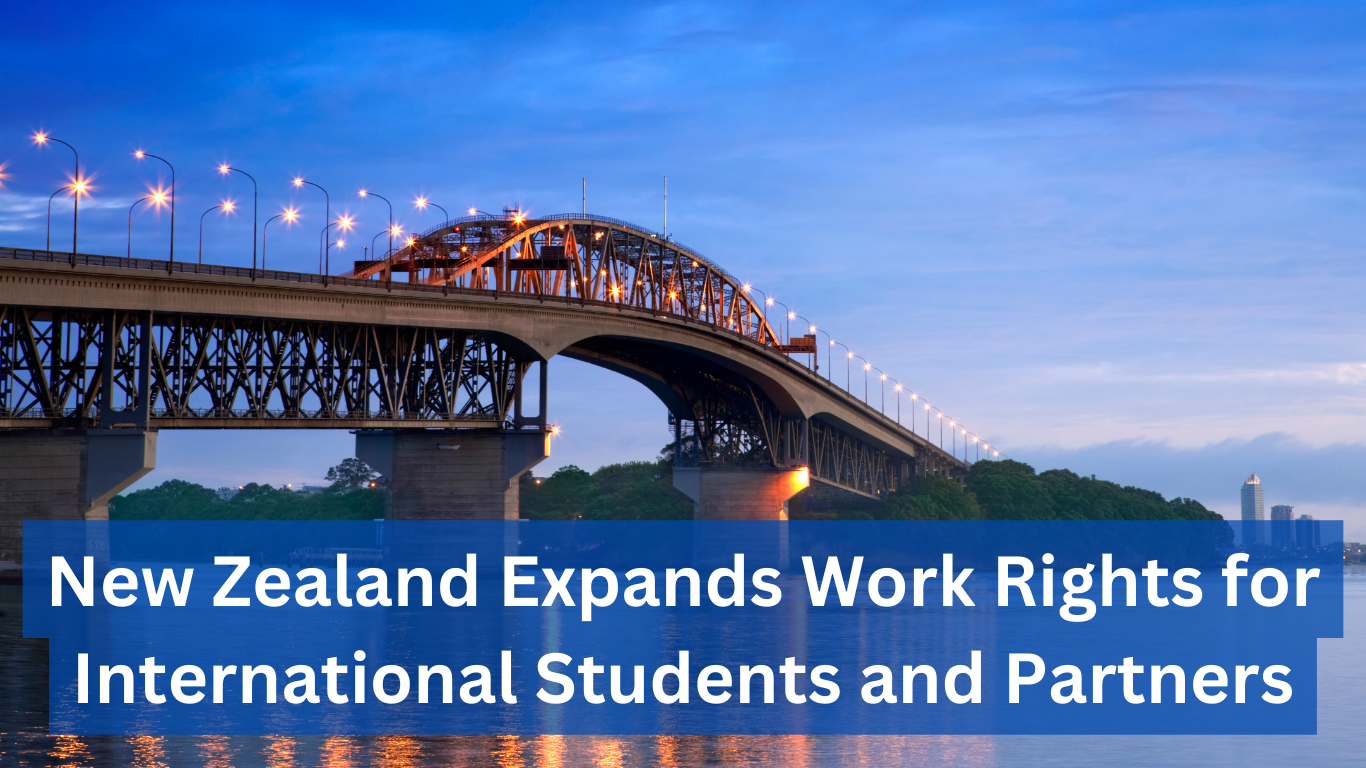In today’s day and age, more than 23 Lakh+ students from India study abroad every year. We have become one of the main focuses for education abroad.
Studying in a country abroad is one of the most rewarding and enriching experiences. It also brings about a change in the skill sets that one requires to perform well professionally.
When deciding the factors to consider between countries, there are a number of factors to consider. Some of them are:
- Cost v/s ROI
- Ranking of the university
- Location and climate of the region
- Scholarship and financial aid
Let’s discuss two of the most important countries in high demand for overseas education, the USA v/s Canada.
While there is no particular betterment in terms of the parameter to say that there is a right or a wrong in choosing a country, it is imperative for us to understand our demand based on a few basic parameters:
Flexibility in choosing courses in bachelors programs
The education system followed at the universities in the USA allows you to choose your own courses, as long as you fulfill certain core requirements. This gives you a tailormade education to your specific interests and career goals. In contrast, the Canadian higher education system tends to be more structured, with a set curriculum for each program. While this provides a solid foundation in the chosen field, it may limit the ability of students to explore other areas of interest.
Ease in obtaining a Visa for studying in the US and Canadian countries
Obtaining a student visa for studying in the United States or Canada can be a lengthy and complicated process. Both countries require proof of acceptance from a recognized institution, evidence of financial support, and proof of language proficiency. However, the United States has recently introduced stricter visa policies, which can make it more difficult for international students to obtain a visa. In contrast, the Canadian visa process tends to be more straightforward, with a focus on attracting international students to the country.
Job prospects after getting a Bachelor’s Degree
While the job prospects for both the countries remain similar, however, USA has a particular proclivity towards STEM and management. In addition to that, the United States tends to have a larger job market overall, with more opportunities in fields such as finance, entertainment, and technology. Additionally, the United States is home to many prestigious universities and research institutions, which can provide valuable networking opportunities and access to top employers.
Cost of higher education in Canada and US
The cost of higher education in the United States and Canada varies depending on the institution, program, and location. In general, tuition fees in the United States tend to be higher than in Canada, with private universities and out-of-state public universities being the most expensive. Looking at an average cost of a student studying in the US would be approximately $70,000; but the cost for students studying would be CAD 60,000. However, many universities in the United States offer generous financial aid and scholarships, which can help to offset the overall cost of education. In contrast, tuition fees in Canada tend to be more affordable, with international students paying the same fees as domestic students in many provinces. Additionally, the cost of living in Canada is generally lower than in the United States, which can make it a more attractive option for international students on a budget.
Scholarships
Many US universities offer scholarships for international students based on academic merit, leadership potential, extracurricular activities, and other criteria. Some scholarships are awarded automatically based on the student’s application for admission, while others require a separate application or essay. The amount and availability of scholarships can vary widely by university, and some scholarships may only cover a portion of tuition or living expenses. There are also several national scholarship programs in the United States, such as the Fulbright Program and the Gilman Scholarship, that provide funding for study abroad programs. Many Canadian universities also offer scholarships for international students, with some universities offering full-tuition scholarships to exceptional candidates. Scholarships in Canada may be based on academic achievement, community involvement, or other criteria. Some scholarships require a separate application, while others are automatically awarded based on the student’s application for admission. The Canadian government also offers several scholarship programs for international students, such as the Vanier Canada Graduate Scholarships and the Canada-ASEAN Scholarships and Educational Exchanges for Development (SEED).
Ease in obtaining Permanent residency in these countries after finishing higher education
Many international students aspire to obtain permanent residency in the United States or Canada after completing their higher education. While both countries offer pathways to permanent residency, the process can be complex and time-consuming. In general, it may be easier to obtain permanent residency in Canada (within 5 years), due to its immigration policies that prioritize skilled workers and international graduates. In contrast, the United States has an extension in the STEM OTP (3 years) post which you will have to apply for an H1B visa. Thus, the processes for the USA immigration have been tightening in recent years, making it more difficult for international graduates to obtain permanent residency.
How difficult is the overall admissions process for university admissions?
The admissions process for universities in the United States and Canada can be highly competitive, with many highly-ranked institutions receiving thousands of applications each year. However, the admissions process in the United States tends to be more holistic, taking into account a wide range of factors such as academic achievements, extracurricular activities, and personal qualities. In contrast, the Canadian admissions process tends to be more focused on academic achievements and test scores. One important difference to note is that for US applications, students are required to fill in the Common Application which is a one-stop solution for the majority of US Colleges, which makes it much easier to apply to multiple colleges in one go. Canada, on the other hand, requires you to fill in each application separately.
In conclusion, both the United States and Canada offer excellent opportunities for higher education, with world-class institutions and a diverse range of programs. However, there are some key differences between the two countries that students should consider when making their decision. The United States offers greater flexibility in course selection, a larger job market, and more opportunities for networking and career advancement. On the other hand, Canada offers a more affordable cost of education, a simpler visa process, and a more welcoming environment for international students.
Ultimately, the choice between studying in the United States or Canada will depend on a variety of factors, including personal interests, career goals, and financial considerations. Students should carefully research both options, consult with their counsellors and advisors, and consider visiting each country before making their final decision. With the right preparation and planning, studying abroad can be a life-changing experience that opens up a world of opportunities for personal and professional growth.
Tips for handling your part-time job while studying abroad
For many students, studying abroad and taking a part-time job can be a thrilling and rewarding experience. While taking on a part-time job can give students stability in their finances and valuable work experience, it can also put them under more stress and constrain their schedules.
Many students experience stress and burnout due to their inability to manage their work obligations and academic commitments.
Today, we will go through some tips to handle their part-time job while they are studying abroad without jeopardizing their grades or personal lives.
Set realistic work hours
Setting realistic work hours is essential to managing a part-time job while studying abroad. It could be tempting to work as many hours as possible to boost your income, but it can quickly result in burnout and harm your performance in university.
Take into account your commitments or obligations outside of work while choosing your working hours, like hanging out with your roommates. It’s critical to be realistic about how much time you can devote to work without jeopardizing your other obligations.
For example, it might be impossible to work a 10–5 job throughout the week if you take classes from 8–3 every day. You can consider taking on shorter shifts in the evenings or weekends. Alternatively, you could discuss a flexible schedule with your employer to accommodate your class schedule.
Setting boundaries with your employer is also important to avoid overworking yourself.
Prioritize your tasks
You have many responsibilities as a student, such as attending classes, completing assignments, and studying for exams in your amber student accommodation. Introducing a part-time job to the mix can make things even more challenging.
A to-do list is one method for prioritizing your tasks. Begin by listing all the tasks you need to complete and then ranking them in order of importance. This will help you identify the most critical and urgent tasks and ensure that you prioritize them.
For example, if you have an upcoming exam, you must prioritize studying over your job for a few days, or doing laundry in your student accommodation trumps going out sightseeing.
Another approach is to divide larger tasks into smaller, more manageable chunks.
For example, If you have a research paper due at the end of the semester, you can divide it into smaller tasks such as researching, outlining, and writing. This allows you to work on the paper gradually without becoming overwhelmed by the sheer magnitude of the task.
Remember that your academic work should always take precedence over your job because that is why you are studying abroad in the first place.
Learn to say ‘No’
Learning to say “no” is essential for properly managing your time and establishing a healthy work-life balance when working part-time and studying abroad. Saying no does not imply being rude or uncooperative but stating your availability and boundaries.
Setting boundaries on your work hours is one practical example of how to say no. While it may be tempting to work additional shifts or longer hours to boost your income, doing so might lead to burnout and negatively impact your academic performance. If your employer requests that you work outside your agreed-upon schedule, be honest about your availability and politely refuse if it does not work for you.
Another example of learning to say no is declining social invitations or events that clash with your job or study schedule.
While taking breaks and enjoying your study abroad experience is essential, it is equally vital to prioritize your responsibilities. If your friends ask you to a party the night before an important exam, politely decline and offer an alternate day or time to hang out.
Conclusion
We hope this article helps you identify tips for handling your part-time job while studying abroad. By implementing the tips discussed in this blog, you can make the most of your study abroad experience while gaining valuable work experience and financial stability. Remember to be flexible, adapt to new situations, and prioritize your goals to succeed academically and professionally.
How to choose the right university for study abroad experience: A complete guide
Studying abroad is a dream for many Indian students who want to pursue a world-class education, explore different cultures, and enhance their career prospects. However, with so many options available, finding the best fit for their academic and personal goals can be challenging.
According to the Ministry of External Affairs (MEA) data, around 2.6 lakh Indian students went abroad in 2020 compared to 5.9 lakh students in 2019 due to the COVID-19 pandemic.
However, a report from Red Seer estimates that 2 million Indian students will be in foreign universities by 2024 as the study abroad sector picks up pace after two years of slowdown. Choosing the right university is crucial for a great study abroad experience. Here’s all you need to know from Prateek Swain, CEO, of Swadesh Inc.
ASSESSING ACADEMIC REPUTATION
- One of the most important criteria for selecting a study-abroad destination is the academic reputation of the university and the program. Individuals should look for universities that have a high global ranking, accreditation, and recognition in their chosen field of study.
- They can consult reliable sources to compare different universities and programs based on various indicators such as academic quality, research impact, faculty reputation, student satisfaction, and employability.
- If they are interested in studying computer science, they may want to consider universities such as Massachusetts Institute of Technology (MIT), Stanford University, or Carnegie Mellon University, which are ranked among the top 10 in the world for this subject by QS World University Rankings.
CONSIDERING AFFORDABILITY
- Studying abroad is a valuable investment in one’s future, but it also comes with a significant cost. Individuals should consider the overall expenses of studying and living in different countries and cities, including tuition fees, accommodation, food, transportation, health insurance, books, and other miscellaneous costs.
- They should also factor in the exchange rate and inflation of the country they are planning to study in.
- Online tools such as numbers or expatiated can be used to compare the cost of living in different countries and cities. Moreover, individuals should explore scholarships, grants, loans, or other financial aid options that can help them fund their education abroad.
POST-GRADUATION PROSPECTS
- Another key factor to consider when choosing a study-abroad destination is the post-graduation prospects of the country and the program.
- Individuals should research the employment opportunities and post-study work options available in the country they are interested in. They should also check the demand and salary for their field of expertise in the country’s job market.
- Online platforms such as LinkedIn or Glassdoor can be used to find out about the latest trends and opportunities in their industry.
QUALITY OF LIFE AND SAFETY
- Studying abroad is not only about academics; it is also about enjoying life in a new country and culture. Individuals should consider the quality of life and safety of the country they are considering, including factors such as healthcare facilities, transportation system, climate, social environment, recreational activities, and cultural diversity.
- They should choose a country that suits their lifestyle preferences and offers a comfortable and secure living experience.
- If they are planning to study in New Zealand, they may enjoy its high quality of life and safety ratings. New Zealand ranked second in the world in the World Happiness Report 2021, which measures how happy people are based on factors such as social support, freedom, trust, generosity, and health. New Zealand also ranked second in the world in the Global Peace Index 2020.
- Moving to a new country for education can be a major transition, and having the right support is crucial for a smooth experience. Prospective international students should look for universities that offer dedicated support services for international students, such as pre-arrival guidance, orientation programs, academic counseling, cultural integration activities, language assistance, career services, and an alumni network.
- They should also check the reviews and feedback from other international students who have studied at the university to get an insight into their experience and satisfaction.
PERSONAL PREFERENCES
Finally, they should also consider your personal preferences when choosing a study abroad destination. These may include:
- The climate and weather of the country
- The culture and customs of the people
- The food and cuisine of the region
- The safety and security of the environment
- The travel and leisure opportunities in the country
These factors may seem trivial, but they can have a significant impact on overall well-being, happiness, and satisfaction during your study abroad journey. You should do some research on these aspects before making your final decision.
CONCLUSION
Choosing the correct country and university for your study abroad experience is a critical decision that requires thorough research and consideration of multiple factors. By assessing academic reputation, affordability, post-graduation prospects, quality of life, safety, and support services, you can make well-informed choices that align with your educational and personal aspirations.
Not Just US, Expert Explains How Popular Study Abroad Destinations Compete for Indian Students
The count of internationally mobile students is increasing year on year, and some forecasts project that 1.8 million Indian students will study abroad by 2024.
The new India is developing at a faster pace. In the accelerated trajectory of India’s development, education stands out as a pivotal catalyst. The upward trend is encouraging: total enrolments in higher education in India surged from 38.5 million in 2019-20 to almost 41 million in 2020-21. Notably, female enrolments witnessed a positive trend, rising from 18.8 million in the preceding year to 21 million.
The count of internationally mobile students is increasing year on year, and some forecasts project that 1.8 million Indian students will study abroad by 2024.
Who could have envisioned, just ten years ago, that India would be at the forefront of global student mobility?
According to data published by the Education Ministry of the Government of India, approximately 770,000 Indian students embarked on their higher education journey in 2022. At a macro level, student mobility globally is influenced by economic, cultural, as well as global geopolitical reasons and India is not an exception.
The push and pull factors
Prominent among the push factors are the increasing population, intense competition, a dearth of positions at reputable domestic institutions, and the allure of professional opportunities and settlement in developed countries.
Conversely, the pull factors encompass the appeal of international exposure, diverse opportunities, interaction with varied cultures, the quality of higher education institutions with robust research facilities, a global educational framework, linguistic diversity, hospitable study environments, employment prospects to earn in higher-valued currency, and favourable immigration policies.
Our students are predominantly drawn to institutions that boast robust industry connections, providing cooperative programs, internships, and highly sought-after placement opportunities. Their choices persistently revolve around factors like educational quality, the pertinence of courses, and the potential for return on investment. The strength and accomplishments of a university’s alumni network and global ranking exert a significant influence over the decisions of Indian students.
Moreover, the cultural exchanges and international exposure facilitated by universities also wield considerable sway. As students increasingly focus on their careers, such provisions undeniably attract the most talented minds.
Shift amidst some constants!
Historically, the US held the spotlight as the land of boundless opportunities, and it continues to reign as the pinnacle of aspirational destinations for higher education. Yet, a significant number of Indian students now set their gaze on other premier locations like Canada, Australia, the UK, Germany, Singapore, UAE, New Zealand, France, and Ireland, among others.
Here’s the twist: an ever-expanding range of options is now in the picture, driven by intriguing and thoughtful motives. Indian students embody global citizenship, shaping their study preferences with specialized criteria: sustainability, innovation, creativity, internationalization, HDI (Human Development Index), and even the pursuit of happiness.
Stepping beyond the traditionally deemed ‘safe’ fields of STEM, Business and Management, Social Studies, Life Sciences, Communications, and Journalism, our students are embracing more creative and demanding domains of study.









